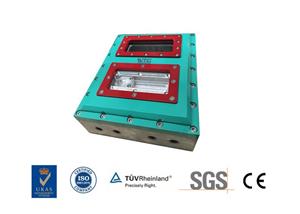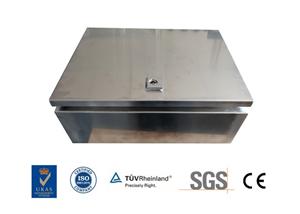Working principle of air compressor
The screw-type single-stage compression air compressor consists of a pair of male and female rotors (or screws) that are toothed parallel to each other, which rotate in the cylinder, so that the air between the rotor teeth continuously produces periodic volume changes, and the air follows The rotor axis is transported from the suction side to the output side, realizing the whole process of suction, compression and exhaust of the screw air compressor. The air inlet and the air outlet of the air compressor are respectively located at two ends of the casing, and the slots of the female rotor and the teeth of the male rotor are driven to rotate by the main motor.
The compressor is directly driven by the electric motor, which causes the crankshaft to produce rotational movement, and drives the connecting rod to make the piston produce reciprocating movement, which causes the cylinder volume to change. Due to the change of the pressure in the cylinder, the air enters the cylinder through the air filter (muffler) through the intake valve. During the compression stroke, due to the reduction of the cylinder volume, the compressed air passes through the exhaust valve and passes through the exhaust pipe. The direction valve (check valve) enters the gas storage tank, and when the exhaust pressure reaches the rated pressure of 0.7MPa, it is controlled by the pressure switch and automatically stops. When the pressure of the gas storage tank drops to 0.5-0.6MPa, the pressure switch is automatically connected and activated.
2. Compressor lubricant
2.1 Rotary vane compressor
Each type of compressor has different requirements for lubricating oil. The lubricating oil function of the rotary vane compressor is to lubricate the blades that slide in and out during the compression process. Lubricating oil is also used as a sealant between the blade and the frame, making gas compression possible. Usually ISO68-150 products meet the viscosity requirements of rotary vane compressors.
2.2 Reciprocating compressor
Reciprocating compressors provide a large outflow pressure capacity ranging from 1 bar g to 1000 bar g (4). The oil-lubricated cylinder, crankcase parts, coils, pistons, valves and loading rods of reciprocating compressors. The crankcase components include cross head bearings, cross joints, cross head guides and crank pins. Recent refrigeration applications have shown that ISO15 lubricants with an operating viscosity of less than 10 cSt can provide suitable lubrication. However, depending on gas molecular weight and flow pressure operation, processing and classic use of hydrocarbon gas reciprocating compressors are ISO68-680 products.
In most reciprocating compressors, a fluid is used as a lubricant for all components. Smaller reciprocating compressors use splash lubricant. Larger devices usually use an oil pump system to lubricate the upper crankcase components. Some large equipment uses two different lubricants, one for the cylinder and the other for other parts that require lubrication. Since cylinder lubricating oil must coexist with gas, it must be compatible with the downward flow process. Cylinder lubricating oil can be designed to provide lubrication for special gas or operating conditions. (2)
2.3 Screw compressor
Filled screw compressors usually use compressed hydrocarbons and production gases, and the flow pressure ranges from 1-25 bar g (5). They have many advantages, including improved compression efficiency, low outflow temperature, high reliability and less maintenance due to simple mechanical construction. Spiral gas compressors must have several functions. They lubricate the bearings, provide adequate sealing between the screw and the frame, remove heat during compression, flush out any particles in the compressor and protect the system from corrosion. The lower viscosity limit is 10-20cSt at the oil supply temperature to the bearing and 5cSt at the outflow condition to ensure proper sealing. The viscosity of the upper lubricating oil depends on the ability to provide enough lubricating oil for the bearing. The typical upper viscosity limit is 30-100 cSt. Usually ISO68-220 lubricants meet the viscosity requirements of screw compressors. The exact viscosity grade depends on the operating conditions and air flow composition.
Due to the closed-loop design of the system, synthetic products are particularly suitable for screw compressors (Figure 1). The lubricating oil and compressed gas enter the separator. The separated oil passes through an oil cooler and flows back into the compressor. The degradation of lubricating oil in this process can lead to compressor problems such as bearing failure, insufficient sealing or corrosion. In many applications, the use of synthetic compressor lubricants can result in effective hydrocarbon compression and gas production
The centrifugal compressor is mainly composed of two parts: a rotor and a stator. The rotor includes an impeller and a shaft. There are blades on the impeller, in addition to the balance disc and part of the shaft seal. The main body of the stator is the casing (cylinder), and the stator is also arranged with a diffuser, a curve, a reflux device, an air pipe, an exhaust pipe, and a partial shaft seal. The working principle of the centrifugal compressor is that when the impeller rotates at a high speed, the gas rotates with it. Under the action of centrifugal force, the gas is thrown into the diffuser behind, and a vacuum zone is formed at the impeller. At this time, the outside fresh gas Enter the impeller. The impeller continuously rotates, and the gas is continuously sucked in and thrown out, thereby maintaining the continuous flow of gas.
Compared with reciprocating compressors, centrifugal compressors have the following advantages: 1. Compact structure, small size, light weight; 2. Continuous and uniform exhaust, no need for interstage intermediate tanks and other devices; 3. Small vibration and easy There are few damaged parts, and no large and heavy foundation is needed; 4. Except for bearings, the internal parts of the machine do not need to be lubricated, save oil, and do not pollute the compressed gas; 5. High speed; 6. Small maintenance and easy adjustment.
The centrifugal compressor transfers the energy of the prime mover to the gas through the high-speed rotating impeller, so that the gas pressure and speed are increased, and the gas converts the speed energy into pressure energy in the fixed element of the compressor. Mainly used to compress and transport gas.
The working principle of the centrifugal compressor is that after the gas enters the impeller of the centrifugal compressor, under the action of the impeller blades, it rotates with the impeller at high speed while flowing to the outlet of the impeller under the action of the rotating centrifugal force, and is diffused by the impeller. After the gas enters the diffuser, the kinetic energy is further converted into pressure energy, and the gas flows into the next stage impeller through the bend and reflux device for further compression, so that the gas pressure can reach the process requirement Requirements.




